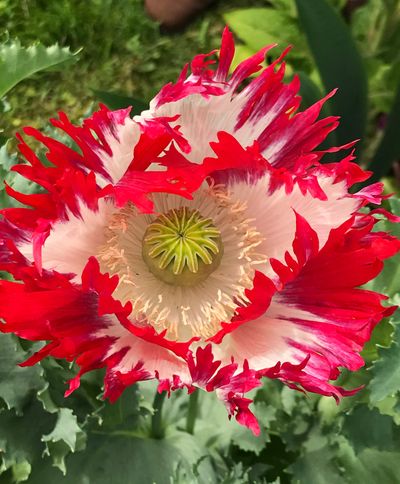In the Garden: Poppies are poppin’ up everywhere, add beauty to gardens

Why haven’t I grown annual poppies before? This thought has been echoing in my brain lately every time I admire the stunning poppies that are currently blooming in my garden. Until recently, I had no idea what I’d been missing.
Annual plants are those that grow, bloom, set seed and die in a single growing season. Flanders, Shirley and Hungarian breadseed poppies fall into this category. While there also are perennial poppies – specifically Oriental poppies – that come back year after year, today’s focus is on annual poppies.
Once I saw poppies growing in English gardens a couple of years ago, those flowers suddenly had a lot more appeal. At Great Dixter, the home and garden of late author and landscape designer Christopher Lloyd, a friend and I fell in love with Ladybird poppies. She obtained seeds and shared some with me.
I was so excited about growing them in my own garden this year and soon began looking for even more types of poppies. After spotting Danish Flag, Sissinghurst White and Amazing Grey in a catalog, I impulsively ordered them.
In late January, I sowed all the seeds using the winter sowing method. This involves planting seeds in containers such as gallon milk jugs and placing them out in the elements until they germinate.
After planting mine, I learned that poppies don’t like their roots to be disturbed. How would I separate the seedlings and transplant them when the time came? I dismissed that concern for the time being.
The seeds germinated well, and, three months later, transplanting day arrived. As I peered into the milk jugs, I looked for little clumps of seedlings and decided it would probably be OK to plant each group as a unit.
About two weeks ago, the poppies began blooming, and I am ecstatic. As you can see by the photo, Danish Flag is absolutely breathtaking. The Sissinghurst White poppies, named after England’s Sissinghurst Castle Garden, are stunning with their blousy, pristine white blossoms that sway gently in breezes.
Amazing Grey hasn’t bloomed yet, but I’m looking forward to seeing their lavender-gray blooms. While that might sound like an odd color for a flower, I recommend looking them up on the web because the unusual hues are fabulous.
If you are now interested in growing annual poppies, here is some cultural information: They prefer full sun and grow best in well-drained soil. The easiest planting option in Inland Northwest gardens is to direct sow the seeds in a bed in early spring once the soil is dry and crumbly. Be sure to mark the spot with a label so you don’t mistake them for weeds later.
The seeds will germinate in a couple of weeks, and the seedlings will be tiny. Let them grow for a few weeks, then thin them 8 to 10 inches apart. Water them regularly, and keep up with the weeding so the poppies don’t have to compete. Depending upon the cultivars you’ve chosen, the plants will grow anywhere from 2 to 5 feet tall.
I recently made the mistake of checking out other poppy offerings in a few seed catalogs, and it looks like I’ll be placing an order to add more to next year’s garden. If you do a bit of searching, be sure to check out Lauren’s Grape, Cherry Glow, Drama Queen, Hungarian Blue and Swansdown.
Even though I’m late to the poppy-growing party, I now realize just how much beauty they add to a garden.
Contact Susan Mulvihill at susan@susansinthegarden.com. Watch this week’s “Everyone Can Grow a Garden” video at youtube.com/susansinthegarden.